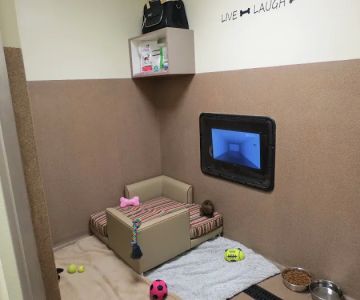How to Manage Cat Dental Disease
As a cat owner, you may not realize just how important dental health is for your feline friend. When I first noticed my cat, Whiskers, avoiding food and drooling more than usual, I didn't immediately connect it to a dental problem. After a visit to the vet, I learned that Whiskers was suffering from a common issue: dental disease. This was a wake-up call, and since then, I've been committed to understanding and managing my cat’s dental health. If you're in a similar situation, here’s a guide to managing dental disease in cats, along with tips to keep their teeth and gums healthy.
1. Understanding Cat Dental Disease
Cat dental disease is more common than many pet owners realize. It affects a majority of cats over the age of three, and if left untreated, it can lead to more serious health problems. Dental disease typically begins with the buildup of plaque and tartar, which can eventually cause gingivitis (inflammation of the gums) and periodontitis (infection of the gums and supporting structures of the teeth).
1.1 Causes of Dental Disease in Cats
The causes of dental disease in cats are often related to poor oral hygiene, genetics, and diet. Cats, particularly those that eat a lot of wet food or don’t chew their food much, are prone to plaque buildup. I found that Whiskers’ dental problems were likely due to his diet and lack of dental care at home. Genetics can also play a role—some cats are more prone to dental disease than others, especially certain breeds like Siamese or Persians.
2. Signs and Symptoms of Dental Disease
Recognizing the symptoms of dental disease in cats can be challenging, especially since cats are excellent at hiding pain. However, there are several signs that can indicate your cat is suffering from dental problems:
2.1 Bad Breath
One of the first signs I noticed in Whiskers was his bad breath. Cats with dental disease often develop a foul odor in their mouths due to the bacteria from plaque and tartar buildup. If your cat’s breath smells unusually strong, it may be a sign of dental disease.
2.2 Difficulty Eating
If your cat is suddenly turning up their nose at their favorite food or seems to be chewing on one side of their mouth, it could indicate pain in their teeth or gums. I noticed that Whiskers was taking longer to eat, and he was avoiding dry food—this was a clear sign that something was wrong.
2.3 Drooling and Pawing at the Mouth
Excessive drooling or pawing at the mouth can also be symptoms of dental issues. Cats with sore gums or loose teeth may exhibit these behaviors. I found that Whiskers would paw at his face when his teeth hurt, which eventually led me to schedule a veterinary appointment.
3. How to Manage Your Cat's Dental Disease
Once dental disease is diagnosed, it’s essential to take immediate action to manage and treat the condition. I learned that prompt treatment not only relieves discomfort for your cat but also prevents the condition from worsening. Here are several strategies I’ve used to manage Whiskers' dental disease:
3.1 Professional Dental Cleanings
The first thing my vet recommended was a professional dental cleaning, which is often necessary to remove tartar and plaque buildup. These cleanings are typically done under anesthesia, and the vet may also perform a full dental examination to check for any signs of infection, gum disease, or tooth decay. I was initially worried about anesthesia, but my vet assured me it was safe and necessary for a thorough cleaning.
3.2 Regular Brushing at Home
After the cleaning, my vet stressed the importance of maintaining Whiskers' oral health at home. Brushing your cat’s teeth is the best way to prevent plaque buildup, and although it seemed intimidating at first, it has now become part of our routine. I use a special cat toothbrush and toothpaste, and I started slowly, brushing a few teeth at a time to get him used to the process.
3.3 Dental Diet and Treats
In addition to brushing, my vet suggested that I switch Whiskers to a dental-specific diet. These foods are designed to reduce plaque and tartar buildup. I also started giving him dental treats that are designed to scrape plaque off his teeth as he chews. These simple changes have had a big impact on his oral health, and I’ve seen a significant reduction in plaque buildup.
3.4 Avoiding Harmful Foods
I also learned that some types of food can contribute to the development of dental disease. I stopped feeding Whiskers soft food exclusively and started incorporating more dry kibble into his diet. While soft food is convenient, it doesn’t help clean the teeth the way dry food can. It’s also important to avoid giving your cat human food or treats that may cause additional plaque buildup.
4. Regular Vet Visits and Monitoring
Just as regular checkups are important for your cat’s overall health, they are also crucial for monitoring their dental health. I now schedule yearly dental checkups with my vet to ensure that Whiskers’ teeth are in good condition. During these visits, the vet can also check for any early signs of dental disease and provide timely treatment if necessary.
4.1 X-Rays and Early Detection
In some cases, your vet may recommend dental x-rays to get a clearer picture of your cat's oral health. These x-rays can help detect problems like tooth root abscesses or bone loss that may not be visible during a regular exam. I found that Whiskers’ vet was able to catch a minor issue early, preventing more serious problems from developing later.
5. Managing Pain and Discomfort
If your cat is experiencing pain from dental disease, it's important to address their discomfort. I found that after Whiskers' cleaning, my vet prescribed pain relief to help him through the recovery process. If your cat is in significant pain due to dental disease, your vet can provide medications to ease their discomfort while you work on long-term solutions like diet and regular cleanings.
5.1 Signs of Pain to Watch For
If your cat is showing signs of pain, such as refusing to eat, excessive drooling, or aggressive behavior, don’t hesitate to contact your vet. Pain can significantly affect your cat's quality of life, and it’s essential to address it as soon as possible. After noticing Whiskers’ discomfort, I was relieved to find that with proper care and pain management, he recovered quickly.











